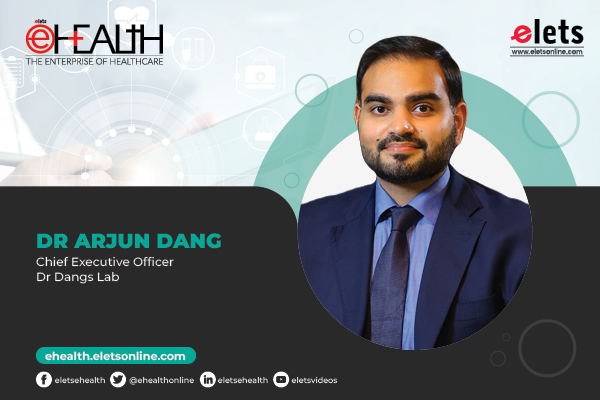
Digital transformation and innovations contributing to improved safety, access, and affordability of services through the use of technology have changed the face of healthcare. The diagnostics domain, which has been one of the early adopters of technology in healthcare, has been a great example of technological transformations in the industry. From the early adoption of automation to using AI and ML, there are many success stories that make diagnostics and technology perfectly suited partners for transforming healthcare. The experience of diagnostics and healthcare is, therefore, an indicator that diagnostics 4.0, which is empowered by technology, can usher healthcare into a new digital era.
The thrust for this transformation comes as much from the user’s need for democratisation of healthcare, as from the quest of laboratories for safer and more efficient solutions. Technologies are being developed to make diagnostic services more participatory while also making them more efficient and accessible. Therefore, the role of technology in diagnostics can be divided into two broad categories based on the key focus of the solution: process focused solutions that aim at improving capability, expertise, and scale, and patient-focused solutions that aim at improving access and patient experience. Digital solutions for diagnostics are, subsequently, discussed here under these categories.

Process-focused digital solutions
Lab management solutions were one of the first forays that digital technology made into diagnostics. Software-based lab management solutions have rapidly replaced the traditional process of management and reporting in the labs, however, there are various processes where digital solutions are still being worked on. This includes a variety of processes in the preanalytical, analytical, and post analytical stages of the laboratory process. These may range from determining sample quality and adequacy, to an automated tracking system with bidirectional interfacing, a robust middle ware, and an end-to-end CRM. Clinical Decision Support (CDS) has been considered an important area of interest and potential in laboratory science whereby indication towards a histopathological picture or a differential diagnosis can be suggested by the software. These digital solutions will depend on an understanding of complex algorithms that are involved in diagnostic processes which may involve deep learning and machine learning.
Patient-focused digital solutions

Smartphone applications that facilitate the booking of diagnostic services have become mainstream and an integral part of lab-user communication. These applications, supplemented with home collection services and tracking services, have brought about a revolutionary change in the patient experience with diagnostic care providers. Endto-end solutions that provide test reports to patients as well as comparative reports for tests that need multiple follow-ups have also been incorporated into many applications. Another dimension of these solutions is the advent of personal assistants and internet-connected devices that involve continuous monitoring of certain healthcare parameters. Digitisation of analog data such as images has helped in a big way in digitalisation of services, and processes, as well as with digital transformation. One of the use cases is the one in the frozen section reporting for making surgical decisions where reports are needed in a very short time. Digitisation of images has helped in making such reporting possible in remote areas.
A digital future
A digital future in diagnostics seems inevitable. Even though the final picture of disruption and transformation is still to become clear, I envision the future focus of technology on three sections of diagnostics viz, development, depth, and delivery of results.
IoT-connected devices, nanotechnology, sensor-based continuous monitoring devices, and wearables will be the future of the IVD industry. Bots, IoT, and AI-based algorithms will be able to provide early guidance to the user about any derangement and the need for active care and may become important triggers for initiating a test. Moreover, there may be a decentralisation in data acquisition. Healthcare data may be available from many sources. Point-of-care diagnostics as well as nanotechnology and sensor based devices may generate data that may contribute to a deeper analysis and interpretation of lab results. This would empower laboratory medicine with contextual information that may have a huge impact on the interpretation of lab findings from the sample alone. These insights will provide new opportunities for in-depth diagnosis. Therefore, though there may be many places and modes from which health data may be available, a single point of analysis, interpretation, and dispatch of integrative reports may be available in the future.
Paving the way for healthcare
The digital transformation of diagnostic care will continue to provide a use case for healthcare in achieving patient-centered, integrative, and affordable care. The adoption of technology in diagnostic care has already led to improvements in patient experience. Generalisation of technology to different healthcare realms may begin realising the triple aim of improving the care continuum experience, accessibility of quality healthcare, and healthcare costs.
Views expressed by Dr Arjun Dang, CEO, Dr Dangs Lab
Be a part of Elets Collaborative Initiatives. Join Us for Upcoming Events and explore business opportunities. Like us on Facebook , connect with us on LinkedIn and follow us on Twitter , Instagram.












